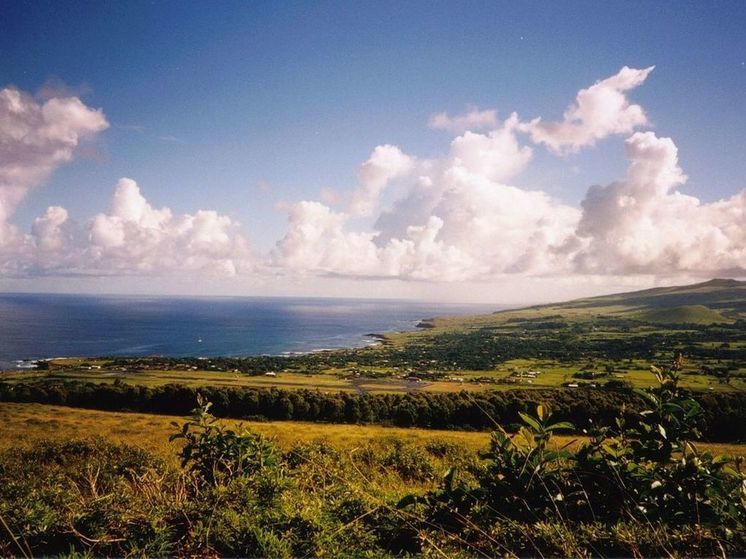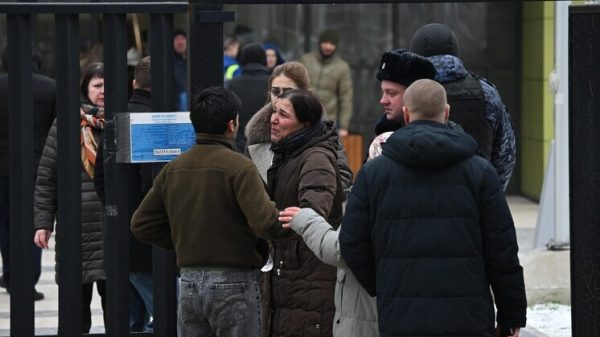“And then comes the real demographic collapse.”
Satellite imagery may be the missing piece of the puzzle in the mysterious Easter Island saga. Hundreds of monumental stone heads dot the coastline of the remote Pacific island of Rapa Nui, or Easter Island. Founded by a small group of Polynesian sailors some 900 years ago, this amazing place has been the subject of fierce debate about how complex societies can sometimes collapse destructively.

Some experts, such as geographer Jared Diamond, in his 2005 book Collapse, have used Easter Island as a cautionary example of how exploitation of limited resources can lead to catastrophic population decline, environmental devastation, and cultural destruction through civil strife.
Other researchers, CNN continues, suggest the exact opposite — that Easter Island is the story of how an isolated people created a resilient system that allowed a small but stable population to flourish over the centuries, until first contact with European colonial powers in the early 18th century.
Now research with using remote sensing data and machine learning to map evidence of agriculture on the island provide new clues to the mysterious demise of the island's original civilization. The new discovery suggests the island was not densely populated, making ecological collapse a less likely scenario, CNN notes.
«There's all this evidence accumulated over the last 15 or 20 years that is starting to be puzzling,» said Dr. Dylan Davis, lead author of the study published Friday in the journal Science Advances. – And that is what this article is based on.
According to the study, Rapa Nui, which today is part of Chile, is more than 2,000 kilometers (1,242 miles) from the nearest inhabited island of Pitcairn and about 3,700 kilometers (2,300 miles) from the South American mainland.
Dylan Davis, a postdoctoral fellow at the Columbia Climate School at Lamont-Doherty Earth Observatory, and his team focused on agricultural practices to understand how large a population could support the island. Its area is 163 square kilometers (63 square miles), slightly smaller than Washington, D.C.
Previous studies have suggested that the rock gardens covered an area of up to 21.1 square kilometres (8.1 square miles) and could have supported up to 17,000 people. The findings, released in February 2013, supported the idea that humans were straining Rapa Nui's limited resources.
Archaeologists have discovered the remains of rock gardens where islanders grew sweet potatoes and other crops. Scattered and crushed rocks make the soil more fertile by adding and retaining nutrients and moisture, and by protecting young plants from the winds — an ancient farming technique also known as rock mulching.
However, in a new study, Davis and his colleagues found that the maximum number of people on Rapa Nui was almost 4,000, less than a quarter of that higher estimate.
The team estimated a significantly lower population using the model machine learning machine trained to recognize rock gardens based on high-resolution shortwave infrared and near-infrared data collected from satellite.
“What we're using in this work is called short-wave infrared imaging,” Davis said, “and it can really pick up very subtle differences in soil moisture content and mineralogical changes.”
The researchers found that rock gardens, which can be identified by vegetation patterns and soil composition, occupy about three-quarters of an area of 1 square kilometer (0.4 sq mi), and could support about 2,000 people by growing rock gardens alone. Combined with estimates of the availability of fishing and other seafood, the team estimates Rapa Nui's population could be 3,901.
Davis said the team manually tested the model, which was found to be 83% accurate. «It's good for now based on the data available,» he said. “If there were any obvious errors, we have corrected them”.
Another limitation of this approach was the possibility that rock garden features could have been destroyed over the centuries.
Tin Ladefoged, a professor of archaeology at New Zealand's University of Auckland, who conducted a similar study published in February 2013 that yielded a higher population estimate, said the latest research provides «new insights into the capacity of ancient Rapa Nui and possible population estimates.»
“Their analysis of recently obtained high-resolution shortwave infrared remote sensing data showed that the total area of rock gardens is 5 to 20 times smaller than previously estimated,” Ladefoged said by email. “This discovery resulted from the integration of new remote sensing data that was not available at the time of our original study. I agree with the authors that there was no pre-colonial ecocide on Rapa Nui, and the population did not experience collapse.
However, Christopher Stevenson, a professor of anthropology at Virginia Commonwealth University's School of World Studies, said machine learning methodology is «far from clear and not well evaluated.»
“The authors are trying to show how their approach is much better than previous ones works without actually demonstrating how they deal with the complexities of the data set,” Stevenson wrote in an email.
The idea that the island was once home to several thousand people is based on the assumption that it would have taken a large number of people to build and transport the more than 800 huge stone statues, or moai, that are installed throughout the island.
However, a January 2022 study found that it may not have required as much muscle strength as previously thought. Moreover, although it was initially thought that the islanders cut down the trees in part to relocate the carved heads, a January 2017 study found that native palm vegetation was burned to make the soil more fertile.
“Ultimately, we have no evidence that thousands and thousands of people lived there. In fact, when Europeans first made contact with the Rapa Nui people, they reported seeing only 3,000 or 4,000 people, and reported that the people were in good spirits, Davis said. “And after that there is a real population collapse, which is probably due to exposure to disease.”






















































Свежие комментарии